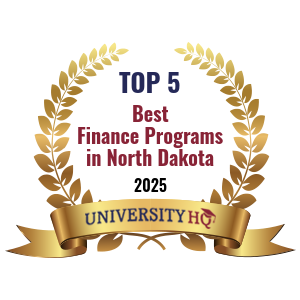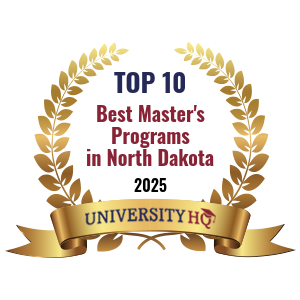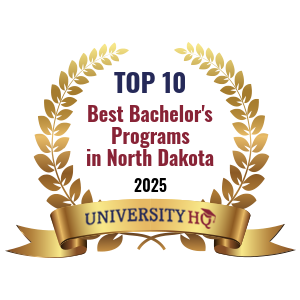Get Matched With Online Colleges
The University of North Dakota (UND) is a public research institution located in Grand Forks, North Dakota. Founded in 1883, it was actually established six years before the area was made a state. Today, it’s recognized as a leader in engineering, medicine, aviation, space, and unmanned aircraft systems.
Search All Programs
Overview of University of North Dakota (UND)
Increasingly regarded as one of the nation’s top institutions for educational quality, affordability, and career outcomes, the University of North Dakota (UND)was ranked 151 by the National Science Foundation. It seeks to inspire a sense of wonder, a love of discover, and a commitment to serve. The institution’s core values include learning, equality, affinity, discovery, and service.
The total student population at the University of North Dakota is 13,772, with 9,718 of those enrolled working towards undergraduate degrees. The institution employs 710 full-time and 387 part-time faculty members, most of whom provide instructional support. Only three professionals on staff are paid to perform research and public service. The resulting student-to-faculty ratio is 17:1, which is comparable to the average for schools in the United States. The average class size is 27. Notably, the university also maintains 476 graduate assistants. Of these, 271 provide instructional support and 205 perform research.
General Information
| School Type | Public |
|---|---|
| Campus Setting | City: Small |
| Campus Housing | Yes |
| Student Faculty Ratio | 17:1 |
| Graduation Rate | 62% |
| Year Founded | 1883 |
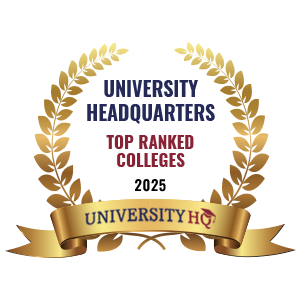
Student Enrollment
Total Students13,772
9,718
4,054
Undergraduate Student
Male 5,539
Female 4,179
Graduate Student
Male 2,311
Female 1,743
Explore Map
Top Rankings For University of North Dakota
UND Acceptance Rate and Admissions
APPLICATIONS5,962
ACCEPTANCE89%
Acceptance Rate5,306
Enrollment 1,751
| Admissions | |
|---|---|
| Application Fee | $35 |
| High School GPA | Required |
| High School Rank | N/A |
| High School Transcripts | Required |
| College Prep Courses | Required |
| Recommendations | N/A |
| SAT/ACT | Required |
| TOEFL (Test of English as a Foreign Language) | Required |
| Application Deadline | August 16 |
| Common Application Accepted | Yes |
UND Tuition Cost & Financial Aid
The University of North Dakota offers competitive and affordable rates, but actual cost depends on several factors. Residency, area of study, learning format, and the type of degree sought all play important roles in determining how expensive enrollment will be.
The base tuition and fees for North Dakota residents attending classes on campus full-time is $5,476 per semester. This cost increases for out-of-state students, however, who are charged $7,785 per semester for the same course load. International students pay even more, at $10,094 per semester. Notably, Minnesota residents receive an out-of-state discount and only owe $6,030 per semester. It’s important to realize that these are base rates, as the institution charges more for certain programs. For examples, those studying business, nursing, engineering, aviation, and medical lab science will owe more in tuition and fees.
Graduate students also pay different rates. The base tuition and fees for North Dakota residents is $6,839 per semester, while non-residents pay $9,829 per semester. Minnesota residents pay $8,454 per semester, but those from other countries will owe $12,820 per semester. Notably, the ultimate cost will vary depending on the program selected, as some areas of study are more expensive than others.
Tuition and fees also differ for those enrolled in online classes. Fortunately, residency does not impact cost in this case. Regardless of where students are from, undergraduates taking courses remotely are expected to pay the base price of $5,476. Graduate students, on the other hand, will owe $7,921 per semester. Individuals enrolled in specialty programs, as mentioned above, will still have to pay more depending on the area of study chosen.
It's important to note that all students are responsible for paying additional expenses such as books, supplies, housing meals, transportation, professional licensure/certification, and personal purchases. The University of North Dakota estimates books and supplies will cost between $800 and $1,000. Transportation is likely to cost approximately $1,200 and professional credentialing is typically around $450. The institution also offers room and board options. While there are many plans to choose from, the estimated cost is $10,914.
On average, University of North Dakota students receive $12,700 annually in financial assistance to help offset the cost of attending college. Overall, the institution provides more than $108 million in aid each year. Different packages are available depending on student type. All students begin by filling out the Free Application for Federal Student Aid (FAFSA). This application helps the institution determine expected family contribution, which in turn indicates how much money may be awarded in the form of scholarships, grants, federal work-study, and student loans.
During the 2020-2021 academic year, 94% of students entering postsecondary education for the first time at the University of North Dakota received some form of financial assistance. Of those, 58% required some amount of financial assistance from student loans.
| Average net price | 2020-2021 |
|---|---|
| Net Price | $17,425 |
| Average Total Aid | $5,576 |
| Students Receiving Financial Aid | 94% |
| Room & Board | $9,922 |
Sticker Price
- Tuition In-State - $10,596
- Tuition Out-of-State - $15,037
- Books and Supplies - $800
- Room & Board - $9,922
- Other - $3,446
Popular Educational Academics at UND
The University of North Dakota strives to provide exceptional educational experiences that enrich the lives of North Dakotans and the global community through excellence in teaching, innovative research, and meaningful engagement.
Those enrolled can choose from over 225 academic programs offered in the following schools:
- Aerospace
- Arts and Sciences
- Business and Public Administration
- Education and Human Development
- Engineering and Mines
- Graduate School
- Law
- Medicine and Health Sciences
- Nursing and Professional Disciplines
It’s also worth noting that the University of North Dakota serves the largest number of exclusively online students among all non-profit, flagship universities in the eight-state region. In fact, the institution began educating at a distance in 1911 with correspondence by mail courses. Today, it offers hundreds of classes remotely, as well as numerous distance learning programs and continuing education opportunities for students around the globe. EDsmart recently declared the institution as the fifth best online university in the nation.
According to data provided by the National Center for Education Statistics (NCES), the University of North Dakota had a first-year undergraduate retention rate of 77% for full-time students in fall 2021. Notably, the national average is only 68%. Overall, this indicates that the mass majority of students enrolled at the university were happy enough with their experiences to return to the institution for a second year.
The overall graduation rate for full-time, first-time students who began their studies in fall 2015 was 62%, with a 26% transfer-out rate. Graduation rates indicate how frequently students complete their degrees or certificate programs within 150% of standard time, which is approximately six years. However you might also want to consider that many of those students who transferred out likely moved into programs that were more suited to their educational goals, and those who graduated from that group are not included in this statistic.
The University of North Dakota is fully accredited by the Higher Learning Commission (HLC), which is recognized by the US Secretary of Education and the Council for Higher Education Accreditation (CHEA). Additionally, some colleges and programs are accredited by other agencies, associations, or professional organizations. Notable examples include the Association to Advance Collegiate Schools of Business (AACSB) International, Accreditation Board for Engineering and Technology (ABET), Accreditation Council for Occupational Therapy Education (ACOTE), American Bar Association, Commission on Collegiate Nursing Education (CCNE), and National Association of Schools of Public Affairs and Administration (NASPAA).
Retention
Rate
4 year
Graduation
Rate
6 year
Graduation
Rate
Student Population Total
Student Population 13,772
9,718
4,054
Most Popular Programs & Majors
(# of Diplomas Awarded by Subject)
| All Business Majors | 269 Total Graduates / 13% |
|---|---|
| Accounting | 73 Graduates |
| Marketing/Marketing Management, General | 67 Graduates |
| Business Administration and Management, General | 34 Graduates |
| Investments and Securities | 18 Graduates |
| Business/Managerial Economics | 15 Graduates |
| Operations Management and Supervision | 15 Graduates |
| Health Professions and Related Programs | 265 Total Graduates / 13% |
| Registered Nursing/Registered Nurse | 143 Graduates |
| Clinical Laboratory Science/Medical Technology/Technologist | 32 Graduates |
| Communication Sciences and Disorders, General | 29 Graduates |
| Rehabilitation Science | 18 Graduates |
| Public Health Education and Promotion | 17 Graduates |
| Transportation and Materials Moving | 255 Total Graduates / 13% |
| Aeronautics/Aviation/Aerospace Science and Technology, General | 168 Graduates |
| Air Traffic Controller | 33 Graduates |
| Aviation/Airway Management and Operations | 30 Graduates |
| Air Transportation, Other | 22 Graduates |
| Flight Instructor | 2 Graduates |
| Engineering | 248 Total Graduates / 12% |
| Mechanical Engineering | 103 Graduates |
| Civil Engineering, General | 43 Graduates |
| Chemical Engineering | 40 Graduates |
| Electrical and Electronics Engineering | 29 Graduates |
| Petroleum Engineering | 28 Graduates |
| Education | 112 Total Graduates / 6% |
| Elementary Education and Teaching | 66 Graduates |
| Secondary Education and Teaching | 15 Graduates |
| Social Studies Teacher Education | 12 Graduates |
| Early Childhood Education and Teaching | 8 Graduates |
| Music Teacher Education | 4 Graduates |
| All Other Diplomas | 43% |
Outcome & Salary
The University of North Dakota conducts a Graduation Survey in order to collect employment and demographic information from recent graduates. The most recent survey was published in 2022 and includes data from students who graduated in August 2020, December 2020, and May 2021. There was a response rate of 32%, with mostly undergraduate respondents.
At the time the information was collected, 76% of respondents were employed, serving in the military, or pursuing additional education. Of those who found jobs, 88% reported that they were related to their degree or field of study. The average starting salary for undergraduates was $49,900, while those with graduate degrees were earning an average starting salary of $68,327. Some top employers included the University of North Dakota, Altru Health System, Sanford Health, Grand Forks Public Schools, and Alina Health.
| Graduates Salary | |
|---|---|
| College Grads Early Career Salary | $58,100 |
| College Grads Average Salary | $71,000 |
| College Grads Mid Career Salary | $100,500 |
| Return on Investment (ROI) | |
|---|---|
| 10 Year Salary Earnings Potential | $710,000 |
| 20 Year Salary Earnings Potential | $1,715,000 |
| Cost of Education (Net Price) 4 Year | $69,700 |
| 10 Year Projected ROI | $640,300 |
| 20 Year Projected ROI | $1,645,300 |
| No College Education Salary Comparison | |
|---|---|
| National Average Salary | $38,792 |
| 10 Year Projected Income | $387,920 |
| 20 Year Projected Income | $775,840 |
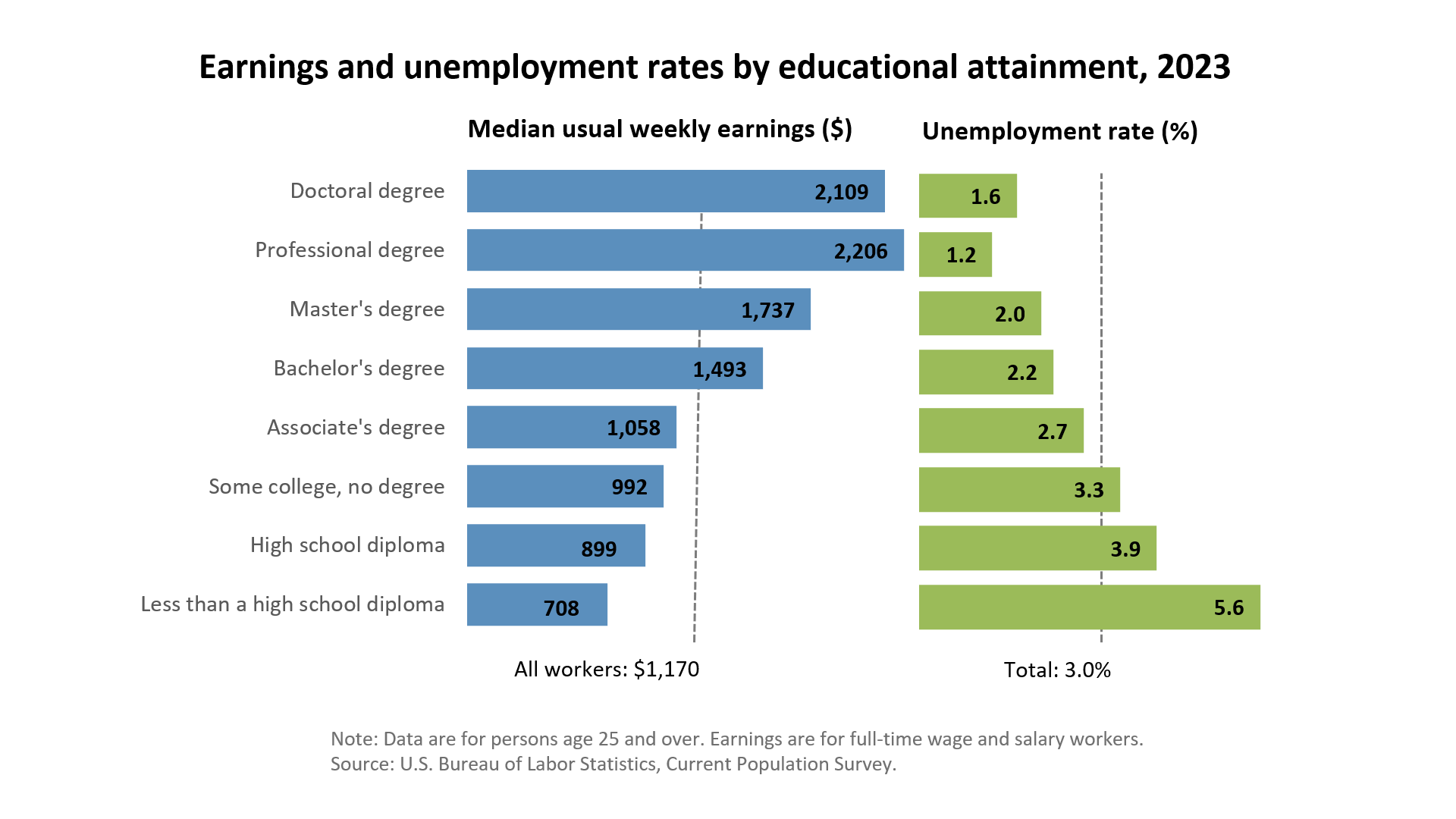
Photos & Videos
sources:
Related Top College Resources




